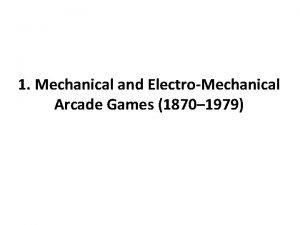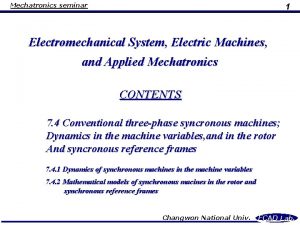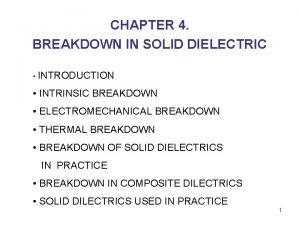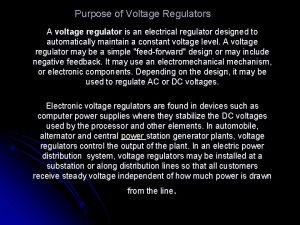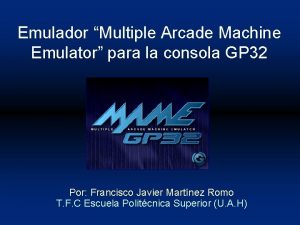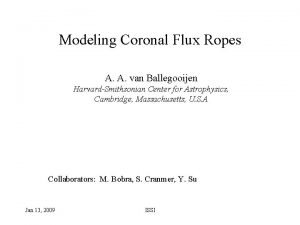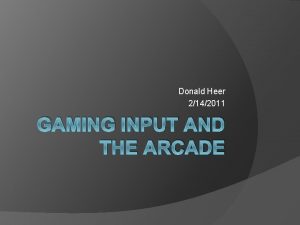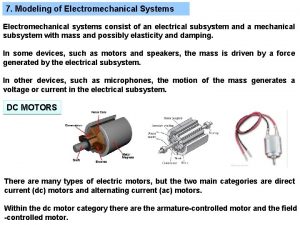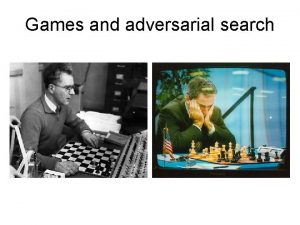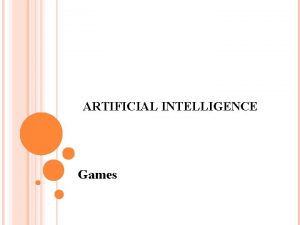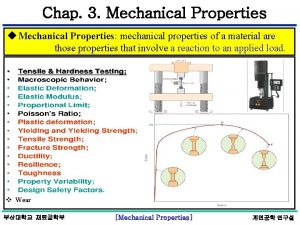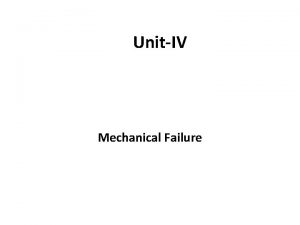1 Mechanical and ElectroMechanical Arcade Games 1870 1979





































- Slides: 37

1. Mechanical and Electro-Mechanical Arcade Games (1870– 1979)

Key Terms • • Automata Working Model Tester Viewer Trade Stimulator Parlor Penny Arcade Bagatelle

The Beginnings of Coin-Operated Amusement • The second industrial revolution in the 1800 s • Early coin-operated entertainment devices (working models, testers, viewers) • Machines in a variety of locations with appeal to different socio-economic classes

The Penny Arcade • Sport-themed games introduce new concepts • Driving games in the United States after World War II • Pinball’s development from a game of chance to a game of skill

2. The Birth of Digital Games: Research and Hacking (1945– 1975)

Key Terms • • Computer Mini-Computer The “Hacker Ethic” Batch Processing Time-Sharing Network Wireframe 3 D Persistent Game World

Games for Research • Games for artificial intelligence research and scientific demonstration • William Higinbotham’s Tennis for Two

Games and the Hacker Ethic • • Increased access to computers The spread and modification of Spacewar! PLATO and early networked gaming The influence of Dungeons & Dragons

3. Early Digital Arcade Games and Home Consoles (1971– 1977)

Key Terms • Attract Mode • Ball and Paddle Game • Dedicated Console

Early Digital Arcade and Home Console Games • Relationship to electro-mechanical and early computer games • The Magnavox Odyssey and divided game spaces • The founding of Atari and influence of Pong • Dedicated consoles and the market flood of 1977

4. The Golden Age Arcade (1978– 1984)

Key Terms • • Transistor–Transistor Logic Microprocessor Shoot ‘em up Climbing Game Laserdisc Vector Graphics Raster Graphics Multi-Genre Game

Golden Age Arcade Games • • Space Invaders and shoot ‘em ups The addition of narrative to arcade games Donkey Kong and the “climbing game” The range of control schemes

5. Early Cartridge-Based Home Console Games (1976– 1983)

Key Terms • • Sprite Venetian Blinds Bank Switching Easter Egg

Cartridge-Based Home Consoles The first “console wars” The emergence of third-party developers Adapting arcade games to the home New design concepts suited for the home (adventure and resource management) • The North American console market crash of 1983– 1984 • •

6. Commercialized Home Computer Games (1977– 1995)

Key Terms • • Microcomputer Assembly Language Open Architecture Design Optical Color Mixing Anti-Aliasing Open World Gameplay Rotoscoping GUI

Early Home Computer Games • Adaption of games originating on PLATO and in university contexts to commercial software • The continued influence of Dungeons & Dragons • Flight and simulation games

Mice, GUIs, and Computer Games • Changes in home computer hardware • The effect of the mouse on interfaces and gameplay • Accelerated gameplay with real-time strategy games

7. Japanese Arcade and Console Games (1983– 1995)

Key Terms • Pseudo-3 D • Pre-Rendered Visuals • Beat ‘em-up

Japanese Post-Golden Age Arcade Games • Greater emphasis on visuals and sound • Refinement and polish of existing forms • Beat ‘em up gameplay and Head-to-Head Fighting Games

Japanese Consoles and the Home • Nintendo transition and dominance of the home market • Nintendo’s franchise establishment • Sega’s transition to the home and the second “console war” • The proliferation of platforming gameplay

8. Realism in Games (1989– 1996)

Key Terms • • Multimedia Haptic Feedback Virtual Reality First Person Shooter Shareware Raycasting Game Engine Mod/Total Conversion

CD-ROMs and Photorealism • Re-emergence of laser discs in arcades • Interactive film and puzzle games on CD-ROM

Real-Time 3 D and Spatial Realism • Early efforts in commercialized virtual reality • Arcade-based vehicle simulators and 3 D imagery • Add-ons and enhancements for 3 D on home consoles • Combining 2 D imagery with real-time 3 D

9. Contemporary Games and Game Design (1996–present)

Key Terms • • Graphics Accelerator Scripted Sequences Streaming Texture Map/Color Map Shaders Bump Maps Set Pieces

3 D Game Design in the Late 1990 s • Technological shifts • New camera and control schemes across genres • Cinematic perspectives in 3 D games

3 D Game Design in the 2000 s • • Changes in the game industry Open world gameplay in the 2000 s The emergence of casual and mobile games Digital distribution in the 2000 s Realism in 3 D surfaces Film-like gameplay The “retro revival”

10. Contemporary Independent Games (1996–present)

Key Terms • • Freeware Doujin Soft Creative Sandbox Narrative Exploration

Independent Games in the Early 2000 s • • The Scratchware Manifesto Shareware, Freeware, and Flash games Alternative modes of funding and distribution Blurred lines between games and art

Independent Games in the Contemporary • • • Online distribution of independent games Console platforms and independent games Reviving and reinterpreting earlier genres Expanding audiences and niche appeal Challenges in the independent games sector
 Electromechanical games
Electromechanical games Strengths and weaknesses of the forster act 1870
Strengths and weaknesses of the forster act 1870 John brown the martyr currier and ives 1870
John brown the martyr currier and ives 1870 Electromechanical vs mechatronics
Electromechanical vs mechatronics Electromechanical association
Electromechanical association Electromechanical breakdown
Electromechanical breakdown Electromechanical period
Electromechanical period Purpose of voltage regulator
Purpose of voltage regulator Electromechanical component
Electromechanical component Types of games indoor and outdoor
Types of games indoor and outdoor Fictional finalism bersifat
Fictional finalism bersifat Alessandro montessori
Alessandro montessori Eugene paton was born in 1870
Eugene paton was born in 1870 Frise chronologique 1815 à 1870
Frise chronologique 1815 à 1870 Frise chronologique de 1815 à 1870
Frise chronologique de 1815 à 1870 1870 locust plague
1870 locust plague 1870
1870 Over land by rail’, gustave dore, 1870
Over land by rail’, gustave dore, 1870 Rey de españa entre 1870 y 1873
Rey de españa entre 1870 y 1873 Hunger games chapter 2 questions
Hunger games chapter 2 questions Math 180 brain arcade
Math 180 brain arcade Vascularisation du tube digestif
Vascularisation du tube digestif Arcade elliptique
Arcade elliptique Inter arcade
Inter arcade Artère scapulaire supérieure
Artère scapulaire supérieure Centipede arcade game
Centipede arcade game Paliag dentar
Paliag dentar Multiple arcade machine emulator
Multiple arcade machine emulator Nucleus arcade
Nucleus arcade Active arcade
Active arcade Dental formula
Dental formula Parabolic dental arcade
Parabolic dental arcade Superior temporal arcade
Superior temporal arcade Class tools net
Class tools net Donald heer
Donald heer Actual mechanical advantage vs ideal mechanical advantage
Actual mechanical advantage vs ideal mechanical advantage Talcott parsons accion social
Talcott parsons accion social Ayşe belgin güven
Ayşe belgin güven
